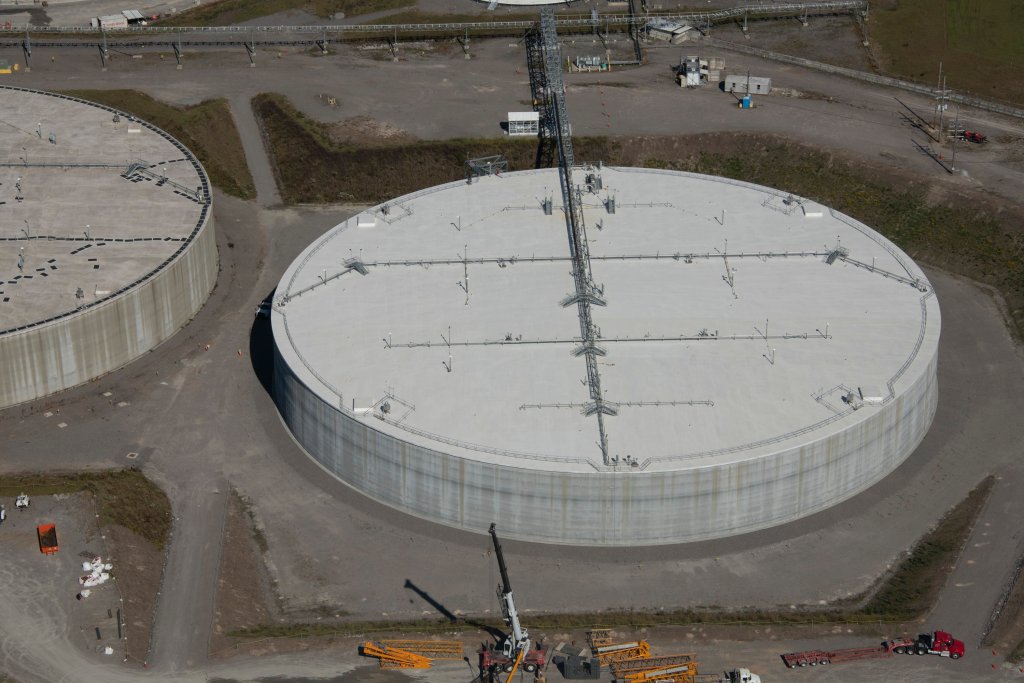SRNL Finds Potential Use for Legacy Coal Ash at Savannah River Site
Historically, the daily operation of facilities at Savannah River Site (SRS), including several nuclear reactors, materials separations facilities, river water pumps and sprawling infrastructure, required a tremendous amount of energy. Most of the electricity was provided by several coal-burning powerhouses scattered throughout SRS. This produced approximately 1.8 million cubic yards of coal ash, which is currently stored in multiple landfills and basins on site.
William Jolin, in the glass, cement and ceramics group at Savannah River National Laboratory (SRNL), and his colleagues are investigating a novel way that a significant amount of coal ash can be used during the disposition of liquid low-level nuclear waste.
Salt waste is a liquid waste that is lighter than and floats above the more radioactive sludge waste in the tanks that hold the remnants of plutonium and tritium production at SRS. It is pumped from the waste tanks and mixed with solids to form a grout that is stored in Saltstone Disposal Units (SDUs) in perpetuity. SDUs are cavernous, cylindrical concrete structures that can each hold up to 33 million gallons of grout waste. When the SDUs are filled, they will be surrounded with backfill material and covered with an engineered cap containing layers of more backfill dirt, geotextile fabric, high density plastic, sand and topsoil. It is anticipated that more than three million cubic yards of backfill will be required.
The coal ash is physically similar to soil, consisting of fine particles of silicon, aluminum, and iron oxides that remain after the carbon was burned. The soil-like properties allow the coal ash to potentially be used in the backfill material for the SDU closure cap. “They need to get the dirt from somewhere,” said Eric McCaslin, SRNL postdoc in the group. “If they don’t get it from coal ash, they are still going to have to dig up those millions of cubic yards of soil just to put there next to the SDUs as backfill.”

Saltstone Disposal Units at Savannah River Site. Photo by Laura Russo, SRS.
Jolin and his team, with funding from Department of Energy – Environmental Management (DOE-EM) Technology Development and help from Savannah River Mission Completion (SRMC), studied the suitability of coal ash for this purpose. Coal ash can contain certain compounds and acidity that, when mixed with infiltrating rainwater, could degrade the exterior concrete of the SDUs. Chemicals in the ash could also leach into groundwater over time, including heavy metals.
The team used computer modeling to estimate how chemicals in the ash would move vertically and horizontally as time passes and performed physical leachate analysis on coal ash from the F-area basin at SRS to determine the levels of unwanted sulfates and acidity in the material.
In the early years after closure, when the plastic cover is intact, minimal water infiltration would allow chemicals to diffuse to the SDUs. In subsequent years, with a degraded plastic cap, the chemicals would be swept downward and not reach the SDUs. However, leachate tests demonstrated that the coal ash did not release sulfates into or increase the acidity of the leachate that could degrade the concrete in the SDUs, thereby easing concerns about the proximity of the ash relative to the SDU superstructure; subsequent studies showed that heavy metals would not be of concern, either.
Thus, the material is a viable backfill material and its use around the SDUs could greatly reduce the amount of legacy coal ash in SRS landfills and basins, most of which will require costly remediation. “Every time they go to try to remediate these (coal ash) units, they just keep finding more and more ash,” said Jolin. “So, it’s quite expensive and quite intrusive to remediate all this ash. Finding another use, hopefully beneficial use, for this ash will be helpful for SRS and the taxpayer in general.”
The team emphasized that it was able to bring together SRNL, SRMC and Savannah River Nuclear Solutions (SRNS) for the project, creating a productive partnership. In addition, coal ash could potentially be used as fill in other applications at SRS and the concept could be used across the DOE complex.